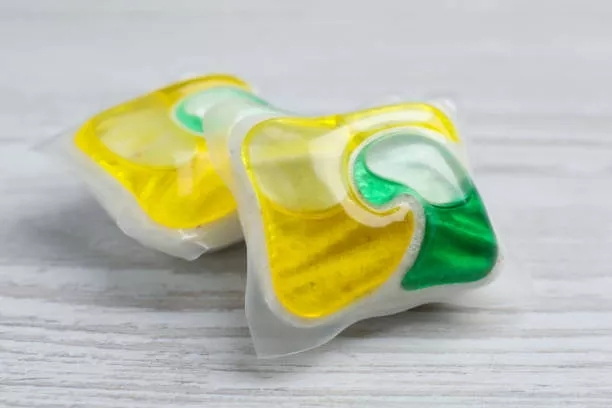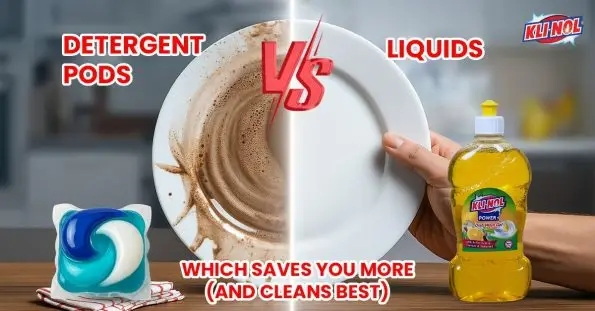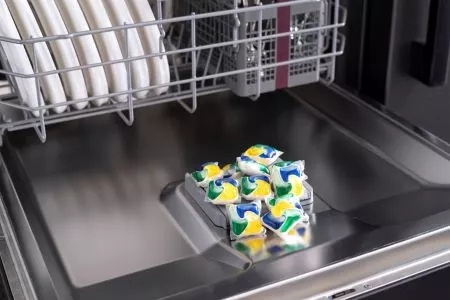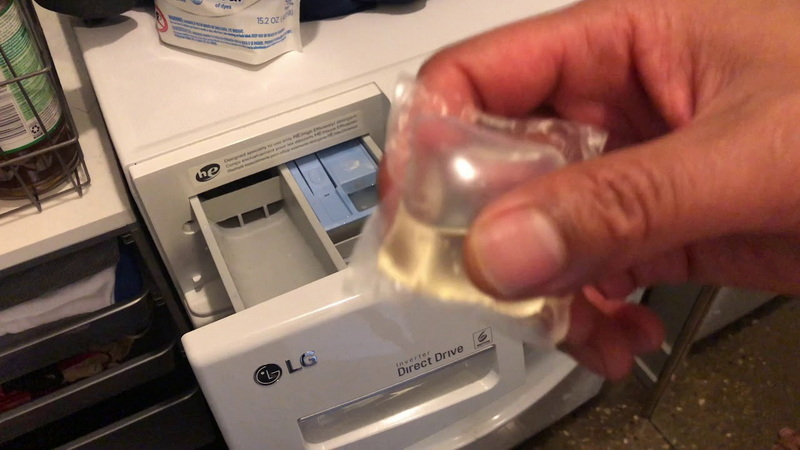Dongguan UFine Daily Chemical Co.,Ltd.
- All
- Product Name
- Product Keyword
- Product Model
- Product Summary
- Product Description
- Multi Field Search
Views: 222 Author: Tomorrow Publish Time: 11-10-2025 Origin: Site











Content Menu
● Understanding Powder Dishwasher Pods
● How Powder Dishwasher Pods Work
● Potential Risks to Plumbing Systems
● Benefits of Powder Dishwasher Pods
● Real-World Evidence and Plumbing Reports
● Environmental Impact Considerations
● Behavioral and Household Factors
● Best Practices for Dishwasher Pod Use
>> Tips to Minimize Plumbing Risks
● Alternatives to Powder Dishwasher Pods
>> Tablets
● Professional Advice from Plumbers
● Advanced Considerations: Water Chemistry and Plumbing Design
● Safety and Health Considerations
● Realistic Expectations: Do Pods Cause Clogging?
● FAQ
>> 1. How can I prevent dishwasher pod residue in my machine?
>> 2. What signs tell me my plumbing is suffering from dishwasher pod misuse?
>> 3. Is it safe to use pods in older dishwashers?
>> 4. Can powder dishwasher pods harm septic systems?
>> 5. Should I alternate between pods and loose powder to protect plumbing?
Dishwasher pods have gained enormous popularity for their convenience and cleaning performance. Among the various types available, powder dishwasher pods are commonly used in both households and commercial kitchens worldwide. However, recent debates have surfaced regarding their potential impact on plumbing systems. These concerns prompt a closer look: Are powder dishwasher pods bad for plumbing?
This article offers in-depth insight into the composition of powder dishwasher pods, how they interact with plumbing, the potential risks or benefits, real-world effects, alternatives, and guidance for safe and effective dishwasher maintenance.

Powder dishwasher pods are compact, pre-measured packets designed to clean dishes in automatic dishwashers. Each pod contains detergent in powder form, sometimes combined with enzymes, surfactants, rinse aids, and other cleaning agents.
- Surfactants: Assist in breaking down grease and debris.
- Enzymes: Target proteins and organic residues.
- Bleaching agents: Remove stains and sanitize surfaces.
- Fillers: Bulking agents to assist in formula effectiveness.
- Anti-caking compounds: Prevent the powder from clumping.
- Water softeners: Help manage mineral deposits.
- Dissolvable film: Typically made from polyvinyl alcohol (PVA), allowing easy release of contents during the wash cycle.
Pods are designed for optimal dissolution at high water temperatures. When placed in a dishwasher, the outer film dissolves, releasing the powder contents into the wash cycle. The detergent then interacts with water, activating their cleaning and rinsing properties. In theory, the powder fully dissolves and rinses away with the wastewater, leaving both dishes and pipes clean.
One of the chief concerns with powder dishwasher pods is residue formation. If the pod does not fully dissolve—often due to cooler water temperatures, old dishwashers, hard water, or overloading—powder may remain inside the detergent compartment or within the dishwasher plumbing.
- The undissolved detergent can accumulate over time, especially in dishwashers with low water pressure or limited rinsing capabilities.
- Detergent residue can mix with food particles and grease, increasing the risk of clogs within the dishwasher's filter, drain line, or even the main household plumbing.
- Over time, this buildup causes slow drainage, foul odors, or complete blockages.
- Hard water: High mineral content can react with detergent, leaving mineral-dense residues or scaling. This can further amplify plumbing risks.
- Soft water: Fewer minerals help detergent dissolve more efficiently, reducing residue.
Dishwashers manufactured 10–15 years ago may not heat water or spray as forcefully as modern appliances, increasing the likelihood of undissolved powder and subsequent plumbing problems.
Despite some risks, powder pods offer several advantages:
- Measured doses reduce detergent waste and prevent overuse, which is a common cause of sudsing or buildup.
- They are convenient and easy to store, minimizing direct contact with chemicals.
- The dissolvable film ensures no outer packaging enters the plumbing system.
When used correctly, powder dishwasher pods pose minimal risk and may even help maintain cleaner pipes when compared to excessive liquid or gel detergents.
Professional plumbers and appliance repair technicians report that major plumbing problems from powder dishwasher pods are rare, especially when users follow product instructions. However, problems do occur under certain conditions:
- Overuse or multiple pods per cycle increase the chemical load in wastewater.
- Incorrect loading or not allowing the pod to be exposed to water can prevent proper dissolution.
- Using pods in cold water cycles routinely can cause accumulation.
- Neglecting regular dishwasher maintenance (filter cleaning, running cleaning cycles) means detergent and food can build up faster.
In service calls from urban areas with high hard-water incidence, technicians note occasional clogs near the dishwasher drain due to mineral buildup combined with detergent residues. In households with misaligned supply lines or aging sewer mains, any additional solids can exacerbate pre-existing slow drains. Conversely, many households report no issues for years when pods are used as directed, with periodic maintenance routines preventing buildup.

Some worry about polyvinyl alcohol (PVA) in dissolvable film. Research shows PVA generally breaks down in wastewater treatment systems; however, incomplete or improper disposal could pose environmental risks if not managed correctly.
Conversely, powder pods—especially eco-friendly formulas—often feature plant-based ingredients and biodegradable components, making them less environmentally damaging than older chemical-heavy detergents. The packaging of many pods is also designed to minimize plastic waste, though outer wrappers and trays still contribute to overall waste streams.
Usage patterns play a significant role in whether pods affect plumbing:
- User diligence: Following dosing instructions and avoiding multiple pods per cycle reduces risk.
- Water temperature: Running hot cycles helps dissolution and reduces residue.
- Maintenance habits: Regular cleaning of filters and inspection of hoses mitigate potential problems.
- Household size and load patterns: Larger households with frequent heavy-duty washing may benefit from higher-quality, higher-capacity dishwashers to ensure complete rinsing.
- Use only one pod per cycle, unless manufacturer instructions specify otherwise.
- Do not overload the dishwasher; allow proper water circulation.
- Ensure the detergent chamber and spray arms are clean and unobstructed.
- Run hot water before starting the dishwasher to help dissolve the pod.
- Routinely clean your dishwasher filter and run a cleaning cycle with dishwasher-safe cleaner or vinegar.
- Choose high-quality, reputable pod brands that specify suitability for your water type.
- If your water is very hard, consider a water-softening solution or a detergent designed for hard water to minimize mineral-related residues.
Be alert to the following:
- Slow draining or pooling water at the bottom of the dishwasher.
- Foul smells from the appliance or adjacent sink.
- Visible undissolved residue in the detergent tray after the cycle ends.
- Gurgling sounds from plumbing after running the dishwasher.
- Monthly: Run a dishwasher cleaning cycle using a product designed for appliances.
- Quarterly: Inspect and clean the filter, spray arms, and seals.
- Semi-annually: Check drainage lines for signs of buildup and flush if needed.

Traditional loose powdered detergent works similarly, but overuse or poor measuring can lead to residue and clogging problems. Proper dosing is crucial.
Liquid and gel pods generally dissolve faster but can create suds that overwhelm dishwasher drainage, sometimes causing blockages or overflow in plumbing.
Some users opt for homemade dishwasher powders with baking soda, washing soda, or citric acid. While cost-effective, they may not fully clean dishes or protect plumbing, especially in hard water regions.
Tablets combine powder and sometimes gel, offering pre-measured convenience. Their dissolution profile is generally similar to pods and requires the same precautions.
Most plumbing professionals recommend:
- Always follow the dishwasher and detergent manufacturer's usage instructions.
- Keep dishwasher components clean.
- Avoid running consistent cold water cycles when using pods.
- Contact a professional if persistent clogs, performance issues, or odors occur.
Understanding the interaction between detergents and plumbing requires a glance at water chemistry and system design:
- Mineral content: High calcium and magnesium can contribute to scale formation, which compounds with detergent residues to create stiff blockages in narrow pipes.
- Pipe materials: Older PVC or metal pipes respond differently to chemical exposure; certain refrigerant and solvent residues from detergents may affect seals and joints over long periods.
- Sewer line slope and venting: Inadequate venting or steep drop-offs can worsen how residual solids move through the system, influencing the likelihood of partial blockages forming in the trap or later in the main line.
Powder dishwasher pods contain concentrated cleaning agents. Direct contact should be minimized, especially for children and pets. Always store pods in a securely closed cabinet out of reach, and handle them with dry hands to avoid dissolving the film prematurely.
If a pod is ingested or a child encounters a pod, seek medical attention immediately. Manufacturers typically place hazard warnings on packaging, and local poison control centers can provide immediate guidance.
With proper use, pods are unlikely to cause clogs. Clogs are more often the result of multiple contributing factors:硬 water scaling, improper installation, aging pipes, poor maintenance, and not following detergent directions. Pods reduce the likelihood of overdosage, which can create excessive suds and waste, but they do not create universal protection against all plumbing issues.
Powder dishwasher pods are not inherently bad for plumbing when used as directed. Most plumbing issues related to them stem from improper use, poor machine maintenance, or unsuitable water conditions. By following best practices, being attentive to your dishwasher's performance, and conducting regular cleaning, you can take advantage of powder pods' convenience without risking your household plumbing.

Run the dishwasher on its hottest cycle, do not overload the racks, and make sure the pod compartment is clear before each use. Regular filter cleaning will also help prevent residue buildup.
Watch out for standing water in your dishwasher, strange odors, and undissolved detergent left behind after cycles.
Yes, but ensure your dishwasher heats water adequately and that you are not using low-temperature cycles. Older machines may require occasional maintenance to avoid pod buildup.
Most pods are safe for septic tanks, but choose biodegradable, phosphate-free pods to minimize septic risks. Always check product labels for septic compatibility.
It is not necessary if you use pods correctly. The key is proper dosing, hot water operation, and routine machine cleaning, regardless of detergent form.